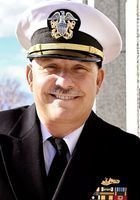Create an account to track your scores
and create your own practice tests:
Test: ISEE Lower Level Reading
Adapted from Scientific American Supplement No. 1082 Vol. XLII (September 26th, 1896)
The rowboat Fox, of the port of New York, manned by George Harbo, thirty-one years of age, captain of a merchantman, and Frank Samuelson, twenty-six years of age, left New York for Havre on the sixth of June. Ten days later the boat was met by the German transatlantic steamer Fürst Bismarck proceeding from Cherbourg to New York. On the eighth, ninth and tenth of July, the Fox was cast by a tempest upon the reefs of Newfoundland. The two men jumped into the sea, and thanks to the watertight compartments provided with air chambers fore and aft, it was possible for them to right the boat; but the unfortunates lost their provisions and their supply of drinking water. On the fifteenth they met the Norwegian three-masted vessel Cito, which supplied them with food and water. The captains of the vessels met with signed the log book and testified that the boat had neither sail nor rudder. The Fox reached the Scilly Islands on the first of August, having at this date been on the ocean fifty-five days. It arrived at Havre on the seventh of August.
Cost what it might, the men were bent upon reaching this port in order to gain the reward promised by Mr. Fox, of the Police Gazette. Thanks to the wind and a favorable current, they made one hundred and twenty-five miles in twenty-four hours. One slept three hours while the other rowed. Their skins and faces were tumefied by the wind, salt water, and sun; the skin of their hands was renewed three times; their legs were weakened; and they were worn out.
| 1. | How did the Norwegian vessel that the two men met most significantly help them? |
It towed them to Havre.
It gave them additional fuel for their ship.
It verified that they were operating without sail or rudder.
It rescued them from the open ocean.
It provided them with food and water.




